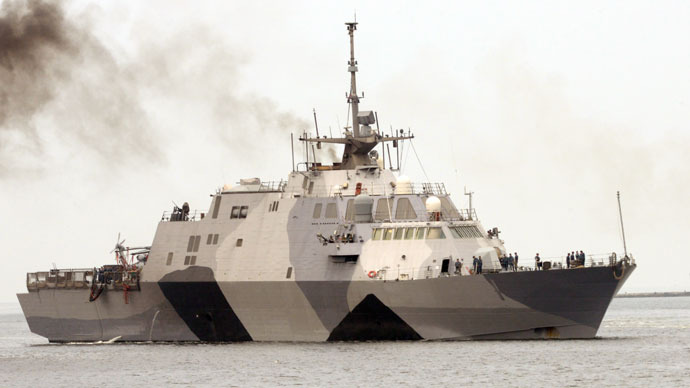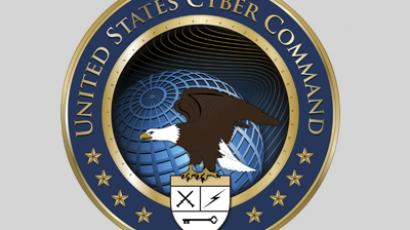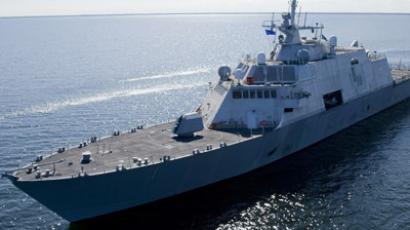The Navy’s newest combat ship could be hacked at any moment

The United States Navy is spending $37 billion on a fleet of high-tech coastal warships, but a new report warns that those vessels are far from invulnerable when it comes to sophisticated cyberattacks.
A Navy official told Reuters this week that although one of America’s newest littoral combat ships (LCS) has been deployed to spend eight months off the coast of Singapore, its computer network failed to prove itself as impenetrable during a recent round of testing.
Speaking on condition of anonymity, the Navy official tells Reuters that a team of computer hacking experts was assembled to conduct penetration tests on the fleet’s lead ship, the USS Freedom, and found deficiencies in the boat’s networks when simulating an attack.
"We do these types of inspections across the fleet to find individual vulnerabilities, as well as fleet-wide trends," the official says in an article published this week.
Defense Department spokeswoman Jennifer Elzea responded to Reuters by confirming that the Pentagon's chief weapons test agency addressed "information assurance vulnerabilities" for the fleet in an assessment that has been provided to the Navy, but adds that the details of that report are classified.
Speaking to Bloomberg News, Elzea says that the Pentagon’s director of weapons testing “recommended those vulnerabilities be remediated without delay.”
A spokesperson for the ship’s builder, Lockheed Martin, tells Reuters that the defense contractor remains at work with the Pentagon to ensure that the network vulnerabilities discovered during pentests won’t pose a problem during the ship’s deployment.
The USS Freedom was deployed to Southeast Asia in early March, and is expected to spend most of 2013 in that part of the globe. Before the launch, Cmdr. Tim Wilke told ABC News, “We've spent the last six months proving that this ship and crew are prepared for this deployment,” adding, “We are spot on and ready to go."
Others weren’t as optimistic, though. Weeks earlier, Vice Admiral Tom Copeman told Defense & Security Intelligence & Analysis that the maiden trek to Singapore could bring to light a number of issues with USS Freedom that weren’t discovered during testing.
“Do we have the best strategies for maintaining the ship? Is our strategy for how we’re going to do the crew swap correct? Logistics, maintenance, spare parts: do we have that right?”Copeman asked.
According to a press release issued by the Navy, “lessons learned from logistics and maintenance support during the transit and port visits will inform follow-on rotational deployments as well as the overall LCS program.”
At nearly 400-feet long, the USS Freedom is being touted as one of the Navy’s greatest additions in recent years: the latest ships in the LCS program are specifically designed to engage in combat while in shallower waters, and the Navy has announced plans to purchase more than 50 of the vessels during the coming years. As the Pentagon awaits that shipment, though, Bloomberg News notes that the construction cost of each vessel has doubled to $440 million apiece.
Of course, one of the biggest selling points of the ship is its “Total Ship Computing Environment,” a sophisticated network of computers and sensors that connects the boat’s external communications system with its weapons control, surveillance, engineering and imagery components, as well as the command, control and intelligence infrastructure. With the USS Freedom’s assessment report classified, however, if and how the TSCE proved vulnerable remains a mystery.
“As information assurance threats continue to evolve, so too will the LCS’s ability to counter them,” an official with Lockheed Martin tells Reuters.
Even before this point, though, the genesis of the LCS was already becoming something of a learning experience for the Defense Department. Although the Pentagon has touted the LCS program as being among the best the DoD’s money can buy, the boat’s very brief history has already been marred by a number of mishaps. Last May, a Navy inspection report disclosed that the ship failed 14 of 28 inspection tests, including an assessment of its fire-fighting systems, communications, electrical systems and forward propulsion. Then in this January, J. Michael Gilmore, the Defense Department’s director of operational test and evaluation, called the ship in its current state doomed, saying that the USS Freedom is “not expected to be survivable”in combat.














